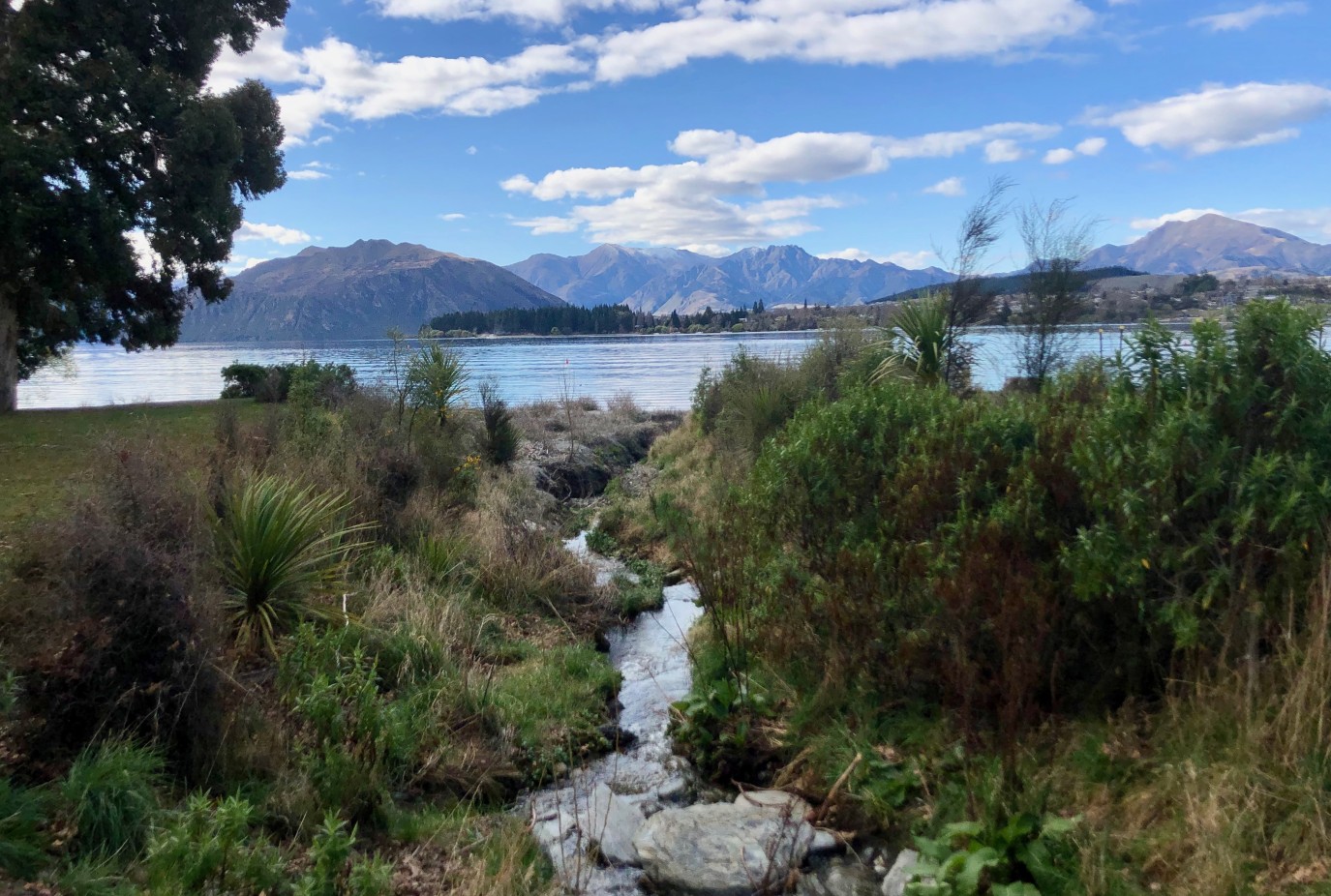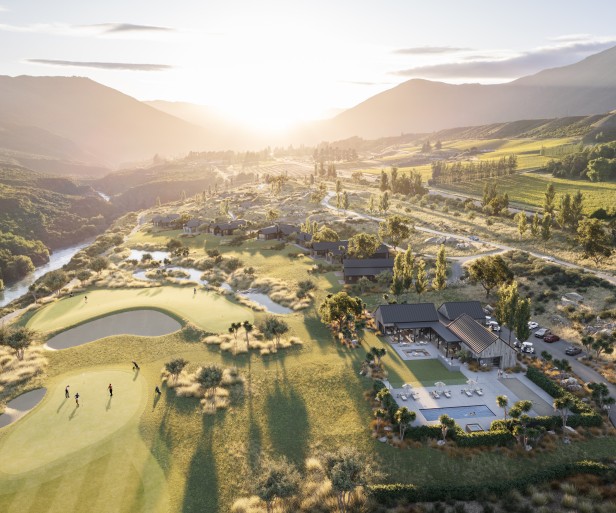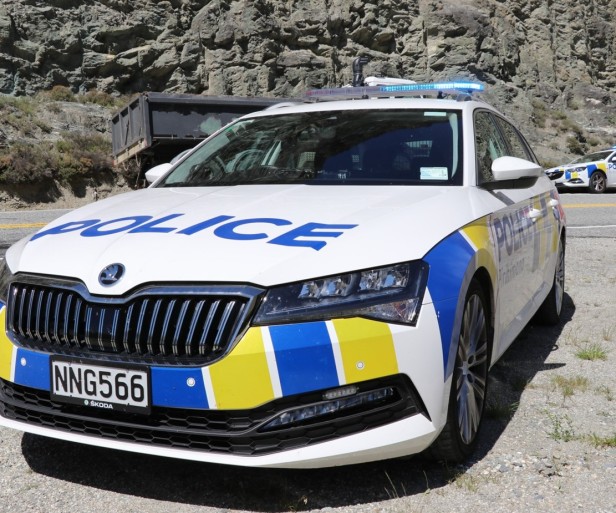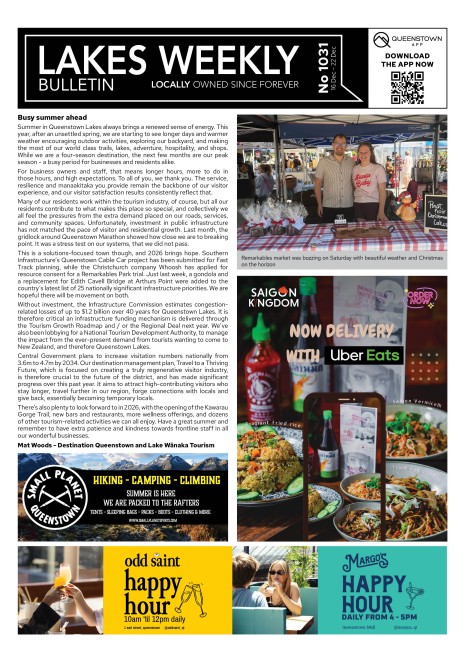How will we pay for water services?

Diana Cocks, Wānaka App
A blueprint for delivering this district’s future Three Waters services is now awaiting consideration and acceptance from central government.
The Water Services Delivery Plan (WSDP), tabled at last month’s full council meeting (August 26) lays out how Queenstown Lakes District Council (QLDC) will provide drinking water, stormwater, and wastewater services in a way that’s reliable, compliant and financially sustainable.
Affordability of household water charges is a key consideration, QLDC strategy and reform manager Pennie Pearce reported to council.
Council is investigating a range of options to fund the services, including - down the track - charging users for the volume of water they use.
Three Waters service charges
Over the next decade, according to the WSDP, average residential household charges for water supply, wastewater and stormwater are projected to rise from $1,500 in FY24/25 to $4,889 in FY2033/34, reflecting the significant investment required to maintain, upgrade, and expand water infrastructure.
Revenue for Three Waters services is currently collected through targeted rates, including fixed annual supply charges per connection (similar to a network charge from an electricity provider) and capital value (property) based rates as well as development contributions.
Charges for the various schemes, such as the water and wastewater schemes in Luggate and Cardrona, will be determined based on the costs associated with the ongoing investment in, and operation of, each scheme.
Revenue has also been forthcoming from central government in the form of specific grants, such as a $23M contribution for planned improvements to Hāwea’s three waters infrastructure.
Three Waters funding
The majority of QLDC’s three waters capital programme is debt-funded.
An investment of $3.45 billion is currently identified in QLDC’s Long Term Plan over the next 30 years for spending on three waters. The lion’s share (41 percent) of this sum is allocated to wastewater services; 36 percent to drinking water and 23 percent to stormwater.
The plan is to expend much of this funding ($1.47B) within the next 10 years primarily in response to the population growth the district is experiencing.
Around 37 percent of planned capital expenditure is expected to deliver infrastructure to meet growth and these costs are primarily recovered from developers through development contributions and developer agreements.
The remaining 63 percent relates to renewals and service level improvements, including compliance upgrades and resilience investments. These costs are borne by existing users and ratepayers, recovered through a mix of targeted and general rates, council said.
QLDC is perhaps more fortunate than other councils in that more than 80 percent of its three waters pipe network is in good condition, according to a recent council report.
Council acknowledges that paying for three waters services over the next 10 years and more will place a significant burden on ratepayers.
To offset that burden, QLDC (and once established, the WSCCO) is investigating different funding and financing tools, perhaps even potential opportunities through the proposed Regional Deal for Otago Central Lakes, QLDC said.
These alternative funding tools include development and visitor levies, government grants, public/private partnerships for the development of water assets (such as the Cardrona Valley Wastewater Treatment Plant), requiring development contributions to be paid upfront in priority development areas, and the installation of smart water meters in households.

The Cardrona Valley Wastewater Treatment Plant is an example of a private/public partnership to provide needed Three Waters infrastructure.
A range of other initiatives that are not funding-specific will also be explored to help manage costs and improve the efficiency of water services, council said.
Smart meters and volumetric charging
Volumetric charging for the water supply via smart meters is widely regarded as the most equitable and efficient approach to managing water resources.
QLDC “recognises that the best way of recovering cost would be via volumetric charging”, Pennie Pearce’s report said.
Charging users based on the volume of water they consume incentivises conservation, promotes fairness, and aligns with the principles of sustainable resource management.
It ensures those who use more water contribute proportionally to the costs of supply and infrastructure, while encouraging more mindful usage across the community.
There are already 20,000 water meters (commercial, domestic, and flow meters) across the district, including in Lake Hāwea and Luggate, council said. All new or redeveloped residential and non-residential units must have individual water meters installed for each individually occupied unit or premises.
Yet, despite its many benefits, volumetric charging won’t be introduced “until late in the ten-year period”.
“Volumetric charging requires… infrastructure and information systems to be in place to ensure the charging approach is reliable and consistently applied,” council said, but the investment in water demand management, including the assets and systems to support volumetric charging, will be staged step-by-step over the next 10 years.
Future steps
The Department of Internal Affairs has received QLDC’s WSDP and a response on whether or not it is acceptable is expected before the end of the year.
Meanwhile, QLDC intends to establish its Water Services Council Controlled Organisation (WSCCO) by July 1, 2027. QLDC will retain ownership of its three waters assets but the WSCCO will independently operate, manage, maintain and invest in council’s water services, replacing the current in-house model.
Water service charges will continue to be calculated by QLDC and billed through rates until the WSCCO is established and has implemented its new charging regime.
Pennie said the WSCCO would cost households more in the short term, but costs were projected to level out by 2034, with potential savings over the long term.








